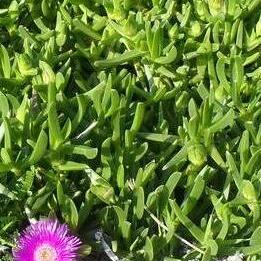Receptacle subclavate to globose, narrowed abruptly into pedicel. Robust, succulent perennial with trailing stems. Leaves almost straight, 12-18 mm diam. Flowers magenta, pink or white, 60-80 mm diam., top of ovary raised towards centre, receptacle bicarinate, subglobose, not tapering into pedicel. Fruits globose to subglobose.
A succulent creeping herb. It forms mats over the ground. The leaves are cylinder shaped and fleshy. They are 3 angled. The leaves are 10 cm long and 1-2 cm thick. They are slightly curved. The flowers are bright red or golden. The flowers occur singly and are 5-7 cm across. The fruit are round and edible.

